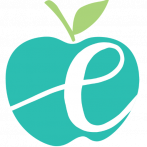
03 Jul So Many Materials!
Building mathematical understanding through concrete and representational activities has long been known to create deep learning. According to Stein and Bovalino (2001), “Manipulatives can be important tools in helping students to think and reason in more meaningful ways. By giving students concrete ways to compare and operate on quantities, such manipulatives…..contribute to the development of well-grounded, interconnected understandings of mathematical ideas.” If used correctly, these math tools are an asset to our instruction, but they come with one VERY BIG problem. MANAGEMENT. And because of this, many of these critical tools go unused or misused.
If real estate is about “location, location, location,” then manipulatives/materials are about “management, management, management.”
Managed well, manipulatives and materials offer much-needed value to a lesson.
Here are a few tips to ensure your success.
1.Create a structure for distribution and clean up. All too often I see classrooms take up WAAAAAAAY too much time handing out materials and cleaning them up. Like…a lot of wasted time. Kids standing in lines, too many kids trying to get the same supply, one kid passing out everything, etc. Empower those students and create efficiencies. We have learning to do!
- Group distribution—have a student leader for each table group, pod or row of students responsible for distributing materials.
- Cafeteria distribution—just as the name infers—have materials out on a table or desks. As students walk to his/her desks or to the floor he/she picks up one of each that he/she will need. Make it a routine! If math is after lunch, as students come in from lunch, he/she knows to grab their whiteboard and supplies and go to the floor/meeting center. This works well for kindergarten as kindergarten uses several different manipulatives on their work mats/trays each day.
- Individual distribution—Students take ownership of his/her own supplies. This would work well for items such as the Secret Code Cards. Each child gets a bag with his/her name, or with his/her student number. Every card in the bag also has the student number. If any go missing, we know what bag it belongs in!
- Have a storage system inside desks for these. Idea: Staple a large manila envelope that closes by a brad to the back of the Student Activity Book. Students can keep a small amount of 2D manipulatives right here for point of use
- Teach them explicitly. Teaching students how to take out and put away materials TAKES A LONG TIME if done correctly. But, just as we teach our kids how to line up, transition during class, etc. over and over again at the beginning of the year, we must take the same care and time to teach our students our expectations regarding materials. When I train third graders to do a math fact routine involving their math boards, I generally take 30 or more minutes to just train them on how to get their boards, where to sit, what to do on the boards, when to clean up (on what cue), where to put the supplies etc. We practice one part at a time. We give glows and grows: how’d that go? What went well (glows), where do we need to improve (grows)? Let’s try again. And we repeat the entire thing again. We all stand up, go outside the door, walk back in (as we would every day after lunch before math) and practice that part again before adding on the next part. This is a routine I had kids do EVERY. DAY. so it was worth the time investment. The whole routine was down to 7 minutes. This included 5 minutes of math fact practice. Only two minutes were lost (in total), getting ready and recovering from the routine. I need getting materials out to run like a well-oiled machine because as you know, I will be distracted 98% of the days with the other 5,438 tasks and interruptions that happen while we wait for students to be ready. If I know I’m going to be interrupted and have other issues to attend to during these times, I know they (material distribution) could very well turn into 10-minute ordeals (just getting the supplies) while I’m distracted. NO THANK YOU. That is just too much wasted instructional time.
“If you don’t have time to do it right, when will you have time to do it over? “ – John Wooden.
2. Keep materials in an easily accessible place for student leaders that do not require teacher help and have back up plans. Consider baskets or tubs at the end of columns, or in the middle of pods, etc. Using math tools is one of the eight Common Core Mathematical Practices and it’s one of most of the other non- common core state’s process standards. Students must have simple and manageable access to math tools any time he/she needs them. If they think they must always ask permission or need a teacher’s help in getting them down, they are less likely to use the tool in the future.
-
- Have a math shelf with easy to grab totes or tubes with the basic math manipulatives for your grade level. Make them easy to grab.
- Keep these tubs (mentioned above) at pods to avoid the stigmas of getting up and needing tools. Hopefully, you’ve created a community that wouldn’t care and wouldn’t even support kids getting up to get supports they need, but if this is a slow process or a unique year of intolerant students, then make the tubs as easily and acceptably accessible as possible.
- Have a Lost & Found. Keep a tub or basket in an easily accessible location. When manipulatives are found on the floor or in random places, they go to the Lost & Found. This minimizes all those distractions during class. When a student realizes he/she is missing something, instead of disrupting class, they go to the Lost & Found and retrieve what they need.
- Simplify storage. Simplify, For example, every student needs a whiteboard but they also need an eraser and whiteboard marker. Store the eraser and marker together for faster and easier distribution. I’ve seen teachers use socks for the eraser and he/she keeps the marker inside the sock.
- Less is More. Only give students what they need! Remember my sad but true statement, “If they have it, they will dump it.” It’s true! Having too many manipulatives to personally care for can be problematic even for the most organized students. Only have students store inside desks or on his/her counting mats (kinder) the materials he/she needs for that lesson/unit. In the example of the Math Expression’s Manipulative kits, they offer a student manipulative kit that is a zippered bag with all of that student’s tools. If your district purchased the individual student packs, consider taking out all the manipulatives and add to the bag as the year goes, only giving students what he/she needs.
3. Make them Responsible. The Lost & Found Tip takes us to the responsibility tip. Because we are also in the job of training young children to be productive and responsible citizens, let’s stop solving their problems for them. I once was in a math classroom that once whiteboards and markers were distributed, it was another 15 minutes before the lesson began because the teacher was solving everyone’s problems. “My marker doesn’t work.” My question back to statement back to students is, “Sounds like that is a problem that needs solving. Good thing you are a problem solver.” And I walk away because I’ve already trained students that if their pencil breaks or if their marker is dead, we keep extras of those supplies in location XYZ, just stand up and solve your problem. If these solutions have been taught well (so they aren’t abused) they will drastically increase the responsibility students take as well as capitalize on learning time!
 4. Plan Ahead! “Failing to plan = planning to fail.” Our friend Benjamin Franklin had it correct! We must plan ahead our use of materials and manipulatives if we desire it to go smoothly. Stay five lessons ahead, skim for materials, itools, etc. that will be used for this week’s lesson and create a game plan for having them ready (including spending time teaching structures around those materials). Don’t minimize the learning that is taking place during your math lesson due to lack of planning. Do you know how many times teachers tell me students struggled with a math concept only for my next question to be, “How did they do with the ____tool?” And then their response, “Oh, I didn’t use those..” And there is always a good reason: lack of time, ‘you don’t know THESE kids,’ ‘its too much work,’ ‘I couldn’t find them,’ etc. The tools are designed to build a deep understanding, but if the tool isn’t used or isn’t managed well, they tend to not serve their purpose.
4. Plan Ahead! “Failing to plan = planning to fail.” Our friend Benjamin Franklin had it correct! We must plan ahead our use of materials and manipulatives if we desire it to go smoothly. Stay five lessons ahead, skim for materials, itools, etc. that will be used for this week’s lesson and create a game plan for having them ready (including spending time teaching structures around those materials). Don’t minimize the learning that is taking place during your math lesson due to lack of planning. Do you know how many times teachers tell me students struggled with a math concept only for my next question to be, “How did they do with the ____tool?” And then their response, “Oh, I didn’t use those..” And there is always a good reason: lack of time, ‘you don’t know THESE kids,’ ‘its too much work,’ ‘I couldn’t find them,’ etc. The tools are designed to build a deep understanding, but if the tool isn’t used or isn’t managed well, they tend to not serve their purpose.
- Simplify preparation. Specifically in kindergarten…Create Math Lunch Buddies– Many students love being the teacher’s helper. Older students love coming down to help in younger classrooms. You can utilize both types of students. On a volunteer basis, use your math lunch buddies to visit you during lunch recess to help sort and organize manipulatives. Maybe your strategy cards got all mixed up, or you need to collect your factor of 5 cards, etc. Student ambassadors can be of great assistance! Kindergarten teachers could really benefit from using older volunteer students and have them set up the kinder math mats for each day’s lesson since the manipulatives and materials change so regularly in kinder.
“Failing to plan = Planning to fail.”
P.S. But of Course, there’s more to say… If you are a Math Expression’s User, please join our Facebook Group where I am giving a Math Expressions specific Manipulative Tip Cheat away for being a member of our group. It includes specific ways to organize your materials such as Secret Code Cards, has images, etc. Join today and get the PDF! Already a member? Send me a message in the FB group and I’ll send the Tip Sheet directly to you.


Sorry, the comment form is closed at this time.